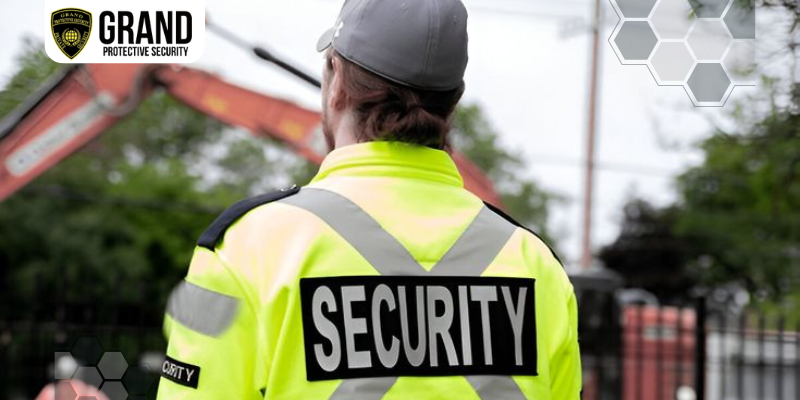Construction sites face unique risks and vulnerabilities, making security for construction sites a crucial part of every successful project. Whether you’re working on a small development or a large commercial site, proper security measures protect equipment, personnel, and valuable materials. In this guide, we’ll explore the importance of construction site security, key systems to consider, and how to build an effective strategy.
Why Security for Construction Sites Is Essential
In the early stages of any building project, the site is often open and filled with expensive machinery and raw materials. Without adequate security, this creates an opportunity for theft, vandalism, and unauthorized access.
Implementing proper security for construction sites is about more than just protecting assets. It also ensures compliance with safety regulations, minimizes project delays, and safeguards workers and visitors alike.
Understanding the Risks and Vulnerabilities
To design a security strategy, it’s important to understand what you’re protecting against. Common risks at construction sites include:
- Equipment theft
- Material loss
- Vandalism or sabotage
- Unauthorized access
- Safety hazards for trespassers
These risks can significantly increase project costs and delay completion timelines.

Key Components of Security for Construction Sites
Effective construction site security involves a combination of personnel, systems, and policies. Here are some of the main components to consider:
Security Guards on Site
Having trained personnel on site acts as a major deterrent to criminal activity. Security guards can perform tasks such as patrolling the area, checking access points, and monitoring visitor logs.
Security Cameras for Construction Sites
Installing security cameras for construction sites provides real-time monitoring and helps deter theft and vandalism. Cameras placed at entry points, storage areas, and around the perimeter are especially effective.
Security Systems for Construction Sites
Beyond cameras, a full security system for construction sites might include motion detectors, alarms, and access control systems. These technologies provide alerts and allow management to respond quickly to potential threats.
Proper Lighting and Fencing
Well-lit areas reduce hiding spots and increase visibility for guards and cameras. Meanwhile, fencing with locked gates controls access and creates a visible boundary around the property.
Construction Site Security Requirements
Every site should follow a construction site security checklist that aligns with both industry standards and specific project needs. Common elements of this checklist include:
- Onsite security personnel coverage
- Camera system installation
- Perimeter fencing with signage
- Inventory tracking procedures
- Access control and logbooks
Reviewing and updating this checklist ensures consistent protection as the site evolves.
Hiring Professional Security Services
For comprehensive protection, many project managers turn to professional construction site security services. These services typically offer:
- Site-specific risk assessments
- Trained security officers
- Surveillance equipment setup
- Mobile patrol units
- Emergency response protocols
When selecting a provider, ensure they understand the unique environment of construction zones and are familiar with construction site security requirements.
Best Security Practices for Construction Sites
Now let’s explore the best security for construction sites, focusing on practices that minimize risk and improve safety.
Secure Entry and Exit Points
Control access with a single entry/exit point, monitored by a guard or through surveillance. All visitors and deliveries should be logged.
Mark All Equipment
Label and register all machinery and tools with unique IDs. This discourages theft and makes it easier to track stolen items.
Conduct Regular Security Audits
Routine inspections help identify weak spots or changes in risk levels. Adjust your security strategy accordingly to stay proactive.
How Secure Are Construction Sites Without Proper Measures?
Without a solid security plan, construction sites are vulnerable to a range of issues. Lack of protection can lead to:
- Increased insurance premiums
- Delays from stolen or damaged equipment
- Safety incidents from unauthorized access
- Financial losses due to theft or lawsuits
Clearly, the cost of insecurity far outweighs the investment in a proper security plan.
Security Staffing and Responsibilities
Whether hiring third-party providers or managing in-house staff, assigning clear roles is critical. Here’s a look at construction site security responsibilities typically given to guards and supervisors:
- Monitoring surveillance feeds
- Reporting suspicious activity
- Checking IDs and controlling access
- Walking perimeters regularly
- Coordinating with law enforcement or emergency services
Each member of the team should be trained in handling specific scenarios to maintain safety across the site.
Legal Considerations and Insurance
Implementing security for construction sites can also help meet certain legal and insurance requirements. For example:
- Some insurers offer discounts for sites with security measures in place
- A well-secured site can reduce liability in case of injury or property damage
- Proper documentation of security protocols may be needed for regulatory compliance
Make sure to consult with legal and insurance professionals to align your site’s security with these obligations.
Adapting to Modern Technology
As construction sites become more advanced, so do the tools used to protect them. Some of the most effective modern options include:
- Remote monitoring platforms
- Drone surveillance for large or hard-to-access sites
- Mobile security apps for guards and supervisors
- License plate recognition systems at access points
These tools allow for quick response times, detailed incident reporting, and full-time coverage.
Conclusion: Building a Safer Worksite
In any construction project, safety and security go hand in hand. Investing in the right measures protects your site from theft, vandalism, and unauthorized access while ensuring peace of mind for workers and stakeholders.By focusing on security for construction sites, you’re not just reducing risk—you’re creating an environment that supports efficiency, compliance, and professionalism. With the right approach, systems, and support, your project can stay secure from start to finish.

